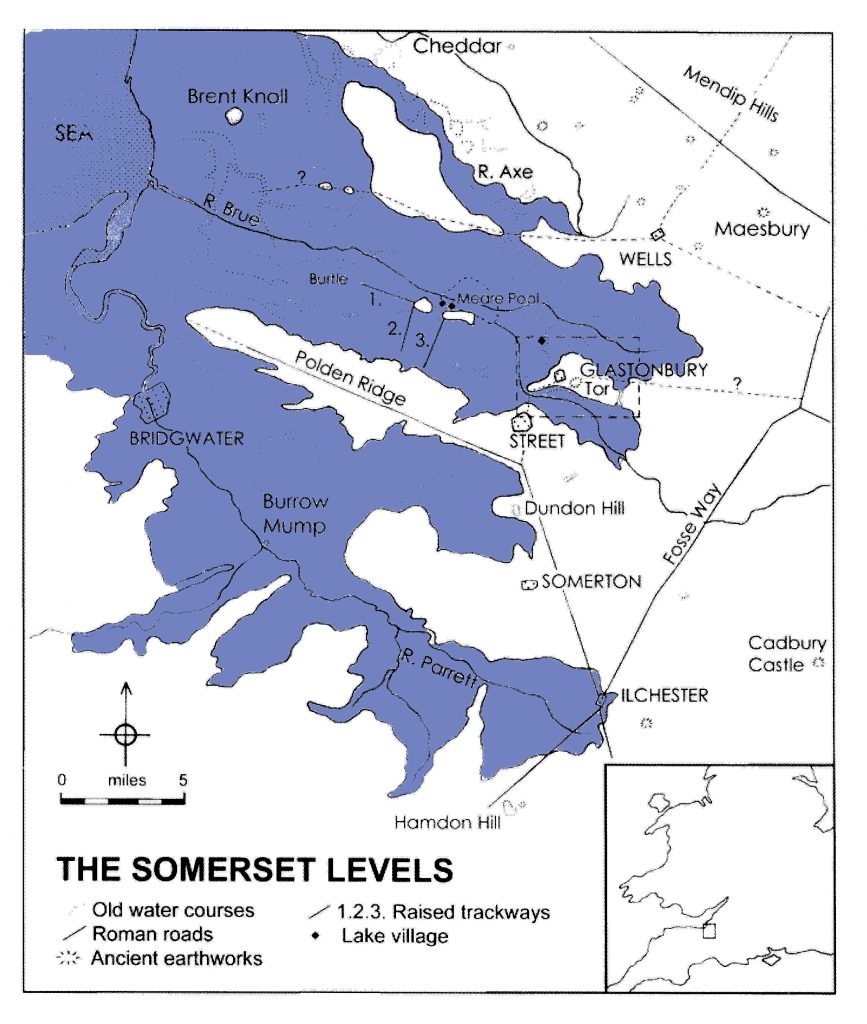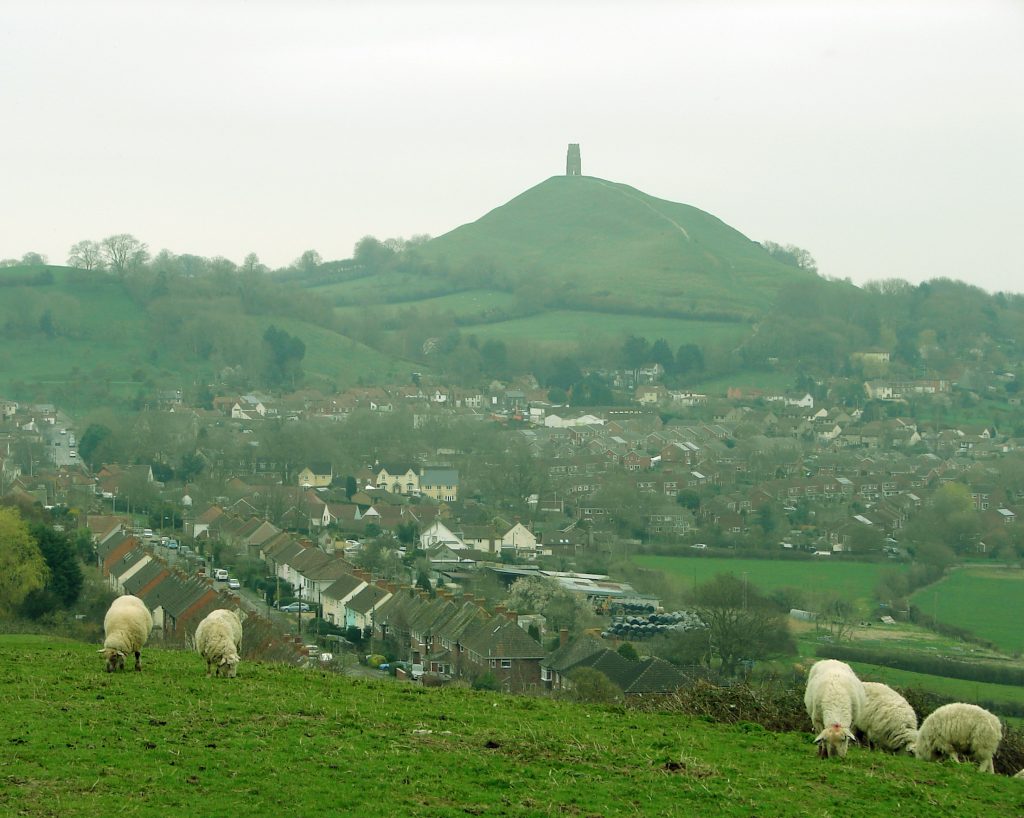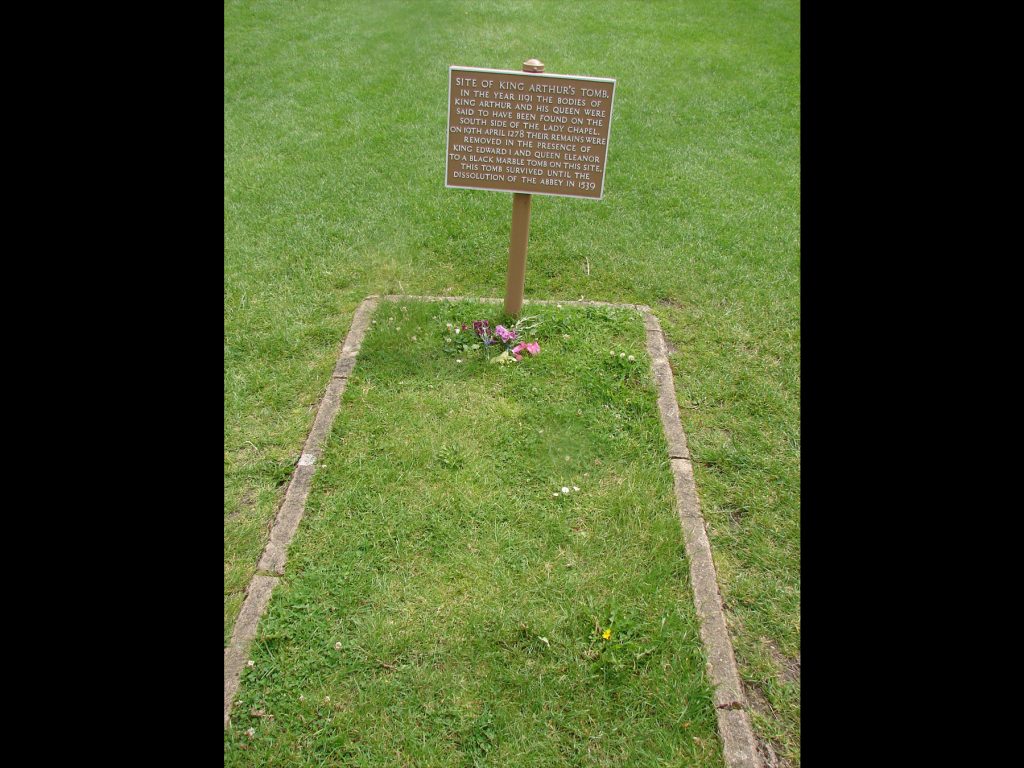My next postings feature topics from the history of Glastonbury, Somerset, the setting of Joseph of Arimathea’s Treasure, the fifth book in my Lady Apollonia West Country Mysteries. Unlike the other settings for my books, the Romans were not a major presence in Glastonbury, but the Fosse Way, a Roman road connecting Lincolnshire in the north to Devonshire in the southwest, passed just to the east of Glastonbury. This area has involved human habitation since at least the Bronze Age.
There was a Lake Village of about a hundred persons before the Roman period a couple of miles northwest of the present town. Their homes floated on water which at high tide connected with the Bristol Channel, now a dozen miles away. This is shown on the map at the top. In the last posting I wrote about legends of Joseph of Arimathea coming to Glastonbury from the Holy Land after the resurrection of Christ. This map shows that according to these legends, he could have come by water in the first century A.D., before land was later reclaimed from the sea, as land has been reclaimed from water in East Anglia or in the Netherlands.
Glastonbury Tor is an ancient hilltop just to the east of the town, towering over it in the picture shown below, which is on the cover of my book. The Tor would have dominated the scene to the east as one would have approached Glastonbury by water two thousand years ago. Remains atop the Tor have been detected from the Saxon period. Today one will see that the Tor has on its top just a tower, the remains of a medieval priory which plays an important role in my story.
Besides the legends of Joseph of Arimathea coming to Glastonbury, there are other interesting legends that do not involve Joseph. The monks of Glastonbury Abbey claimed in the late 12th century to have found the remains of the legendary King Arthur and Queen Guinevere in the abbey graveyard. These remains were eventually reburied in a tomb in the quire of the abbey church near the crossing. This reburial ceremony was important enough that King Edward I of England and Queen Eleanor attended it.
In the ruins of the abbey church, there is a sign commemorating Arthur’s tomb as shown in the picture below. It is of interest that this legend arose shortly after a fire had done much damage to the abbey, perhaps the legends grew to stimulate pilgrimage and bring wealth to the abbey. A related legend involving King Arthur and Queen Guinivere was that Glastonbury Tor, rising as it did out of the water at the time of King Arthur, was the Isle of Avalon.
There is evidence of habitation at Glastonbury as early as the 5th century A.D. when Irish monks formed a monastery at Beckery on the southwest corner of modern Glastonbury. Further settlement was in the center of Glastonbury by around AD 700 when it was named Glestingaburg. Glastonbury Abbey had its origins by the 7th century, although the legends of Joseph of Arimathea claim that he founded the first monastery.
 The first stone church at the abbey site probably dates from the early eighth century and was enlarged in the 10th century by Abbot Dunstan before he became Archbishop of Canterbury. Other highlights from the Saxon period include the burials in the Abbey of King Edmund in 967 and King Edmund Ironside in 1016.
The first stone church at the abbey site probably dates from the early eighth century and was enlarged in the 10th century by Abbot Dunstan before he became Archbishop of Canterbury. Other highlights from the Saxon period include the burials in the Abbey of King Edmund in 967 and King Edmund Ironside in 1016.
In the next posting I will continue discussing the history of Glastonbury after the conquest of England in 1066 by the Norman, William the Conqueror.


